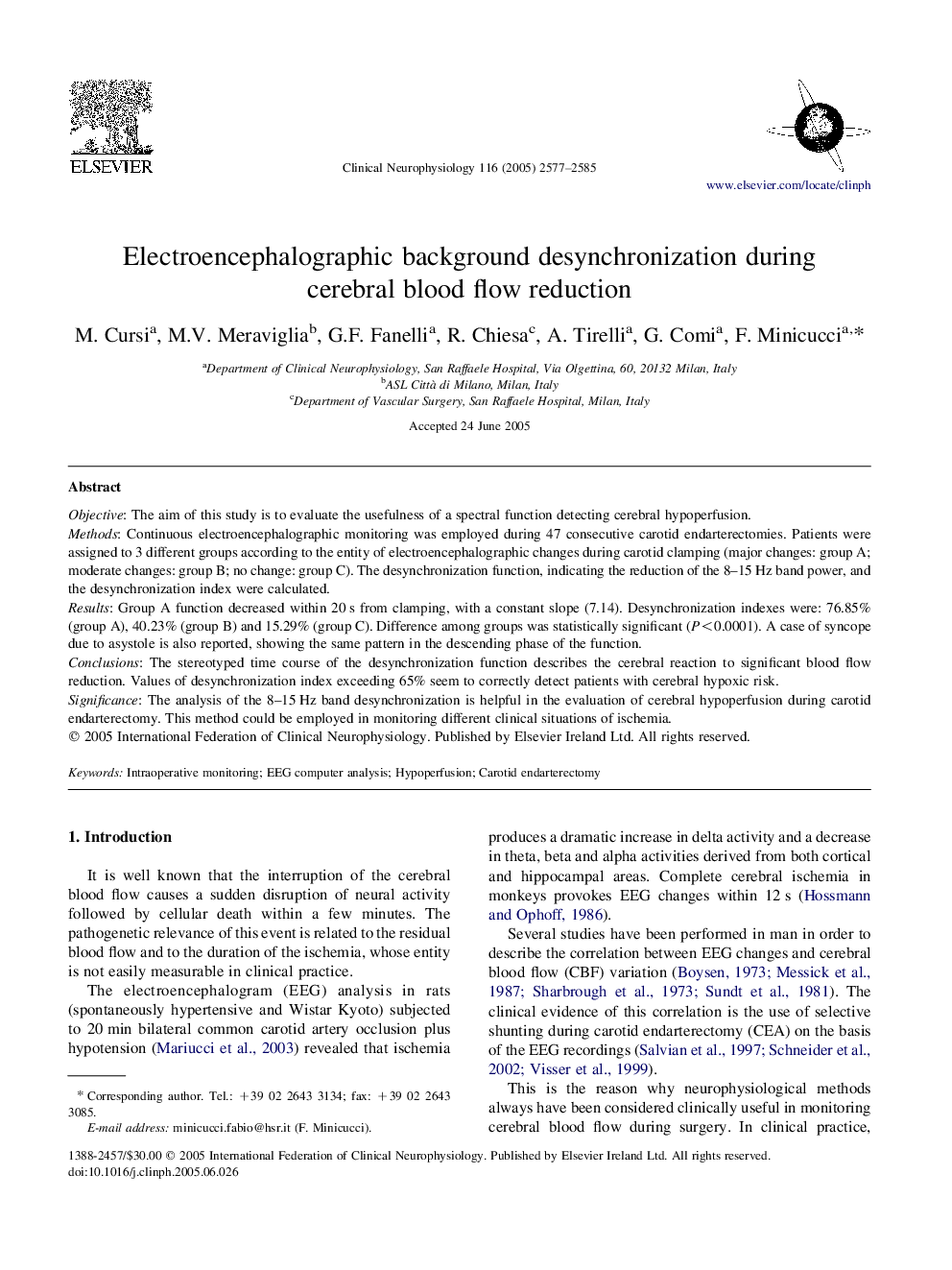| Article ID | Journal | Published Year | Pages | File Type |
|---|---|---|---|---|
| 3048704 | Clinical Neurophysiology | 2005 | 9 Pages |
ObjectiveThe aim of this study is to evaluate the usefulness of a spectral function detecting cerebral hypoperfusion.MethodsContinuous electroencephalographic monitoring was employed during 47 consecutive carotid endarterectomies. Patients were assigned to 3 different groups according to the entity of electroencephalographic changes during carotid clamping (major changes: group A; moderate changes: group B; no change: group C). The desynchronization function, indicating the reduction of the 8–15 Hz band power, and the desynchronization index were calculated.ResultsGroup A function decreased within 20 s from clamping, with a constant slope (7.14). Desynchronization indexes were: 76.85% (group A), 40.23% (group B) and 15.29% (group C). Difference among groups was statistically significant (P<0.0001). A case of syncope due to asystole is also reported, showing the same pattern in the descending phase of the function.ConclusionsThe stereotyped time course of the desynchronization function describes the cerebral reaction to significant blood flow reduction. Values of desynchronization index exceeding 65% seem to correctly detect patients with cerebral hypoxic risk.SignificanceThe analysis of the 8–15 Hz band desynchronization is helpful in the evaluation of cerebral hypoperfusion during carotid endarterectomy. This method could be employed in monitoring different clinical situations of ischemia.
